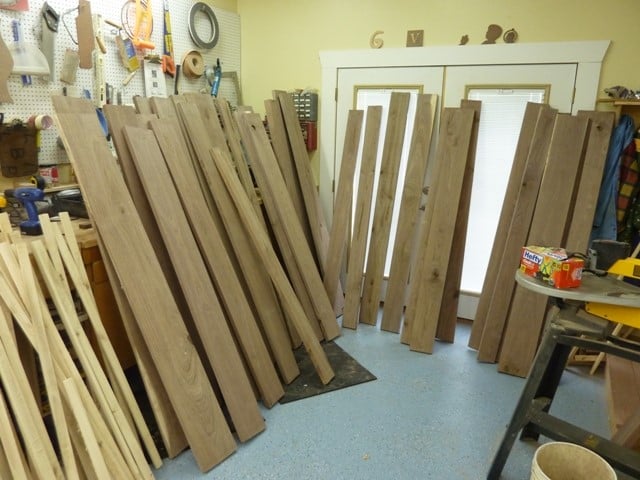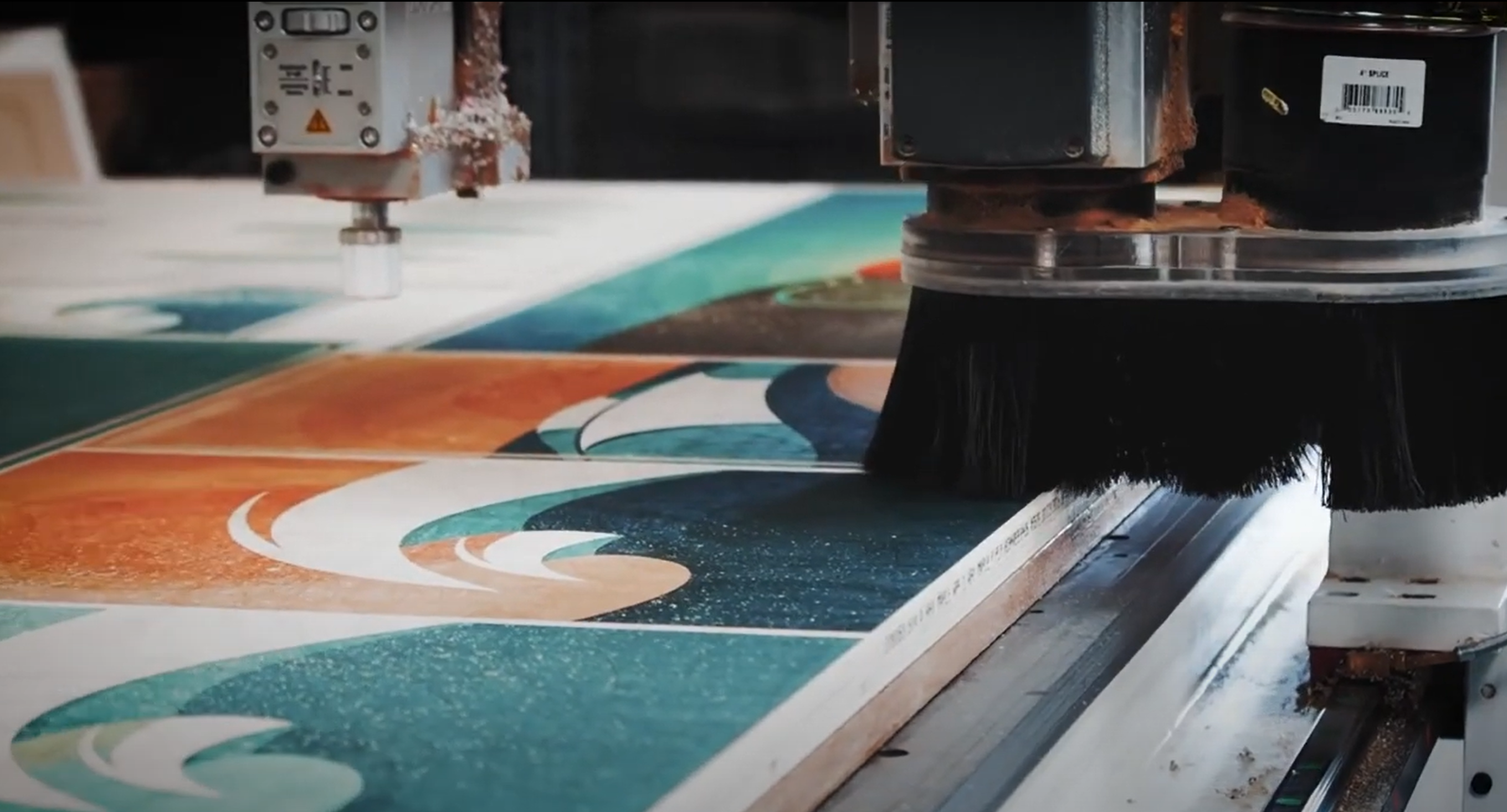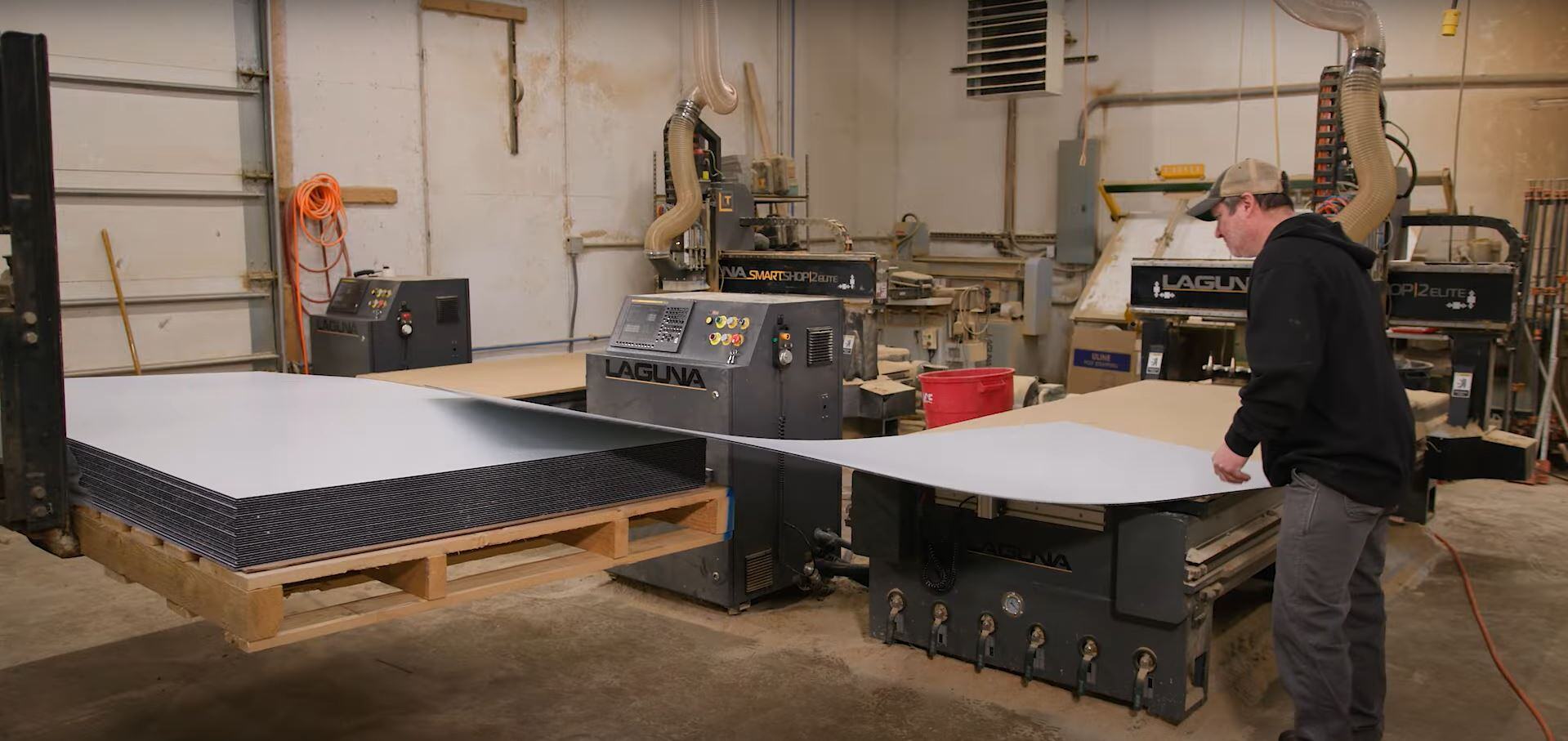I remember back when I got started in woodworking, I thought that if I could find good deals on a table saw, planer and bandsaw, that the cost of my woodworking hobby would be low.
Little did I know at the time, but the cost of tools is commonly a small overall portion of the overall expense of the hobby. I was shocked when the materials cost for my first big project (and entertainment center), in fact, exceeded the sum total that I had spent on my tools.
By a factor of two! So, being a frugal minded woodworker, I started to think about ways that I could save money on wood. Here are a few of my favorites:

Cut your own.
My favorite way to get cheap wood is to watch for tree service companies doing work in the neighborhood, and asking for select pieces. They generally have to pay to discard the wood, so there is generally no hesitation on letting a woodworker grab a few pieces.If you make a small investment (around $100) in a chainsaw mill you can slab out larger pieces on site and bring home some great lumber for free. I haven’t gone to that extreme, so I take the wood home in 2’ lengths, and slice up short boards on my bandsaw.
At first I thought that having a bunch of 2’ long boards around would be a waste of space in my shop, but to my delight I find that I’m able to make a lot of my projects with boards that size after they have been dried properly. Here’s a video that covers my process of slicing and drying neighborhood wood.

Buy it green.
You don’t have to own a sawmill to reap some of the cost savings. You can either find a sawyer to saw up logs for you, or you can sometimes find small operations that will sell green wood to you.In that case, I try to pick up the lumber on the day that it was cut to ensure that it is handled properly from the start. Sealed ends, stacked properly with plenty of air circulation, etc.
If you take the right steps, you can have lumber that is as good as any that you would buy commercially milled and dried. You’ll have to wait up to a year to use your lumber, but buying ahead, particularly in larger quantities, can save you a lot of money.

One man’s trash.
If you make connections with local sawmills, cabinet shops and furniture makers, you will be surprised to learn what ends up in their dumpsters. If they are aware of your interest in off-cuts, overruns, or damaged materials, you can end up with some cheap (or even free) materials.One time I was able to buy a 1000 board foot unit of premium quality kiln dried and surfaced maple for $1/board foot because it was exosed to water and the insurance company took possession after paying out on an insurance claim on a facility that was destroyed. Guess what happened after the wood got wet? It dried, and returned to normal.

Pallets.
If you put some feelers out to shipping companies, warehouses, etc., you will find that they are constantly getting rid of pallets, some of them made of white oak. With just a little bit of elbow grease, you can produce some great wood for free.You might want to check the wood with a metal detector before running it through your planer, however, because hidden nails can wreak havoc on your knives.
Craigslist & Facebook Marketplace.
By regularly checking your favorite online markets, you can find some great deals. After following these for a while, you will get a good sense of what is a great deal, versus when someone is trying to off-load their junk. When you see a good deal, act fast, because you’re not the only one who is looking to save money on wood.With all of these great opportunities for buying inexpensive lumber, don’t let the high cost of materials keep you from getting out into the shop and making some projects. Get creative and resourceful, and you might just find that finding good materials for cheap can be as fun of an activity as woodworking itself.




